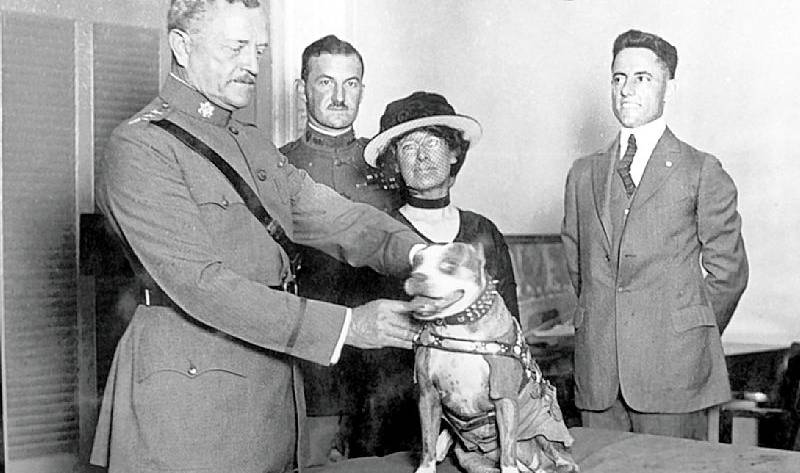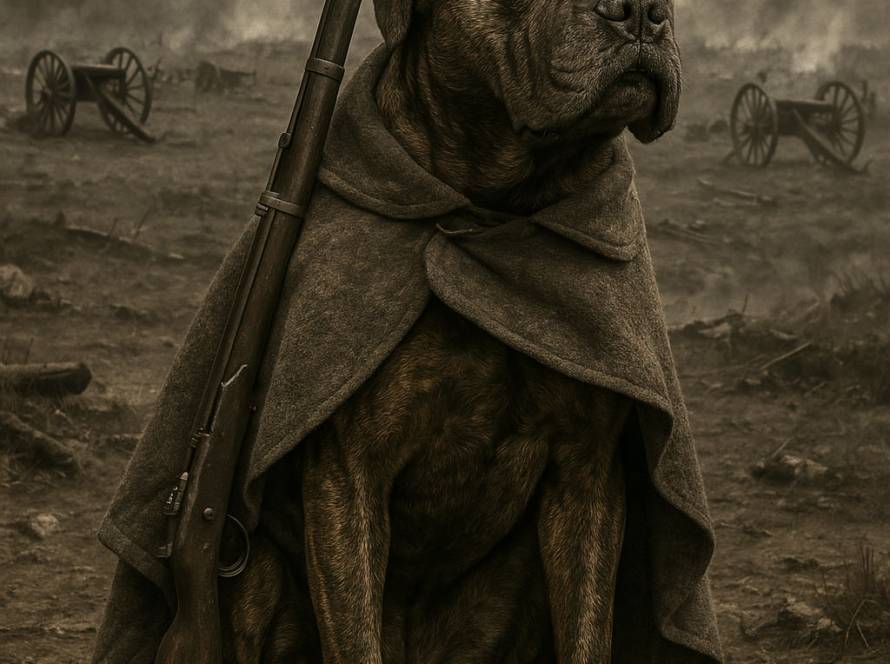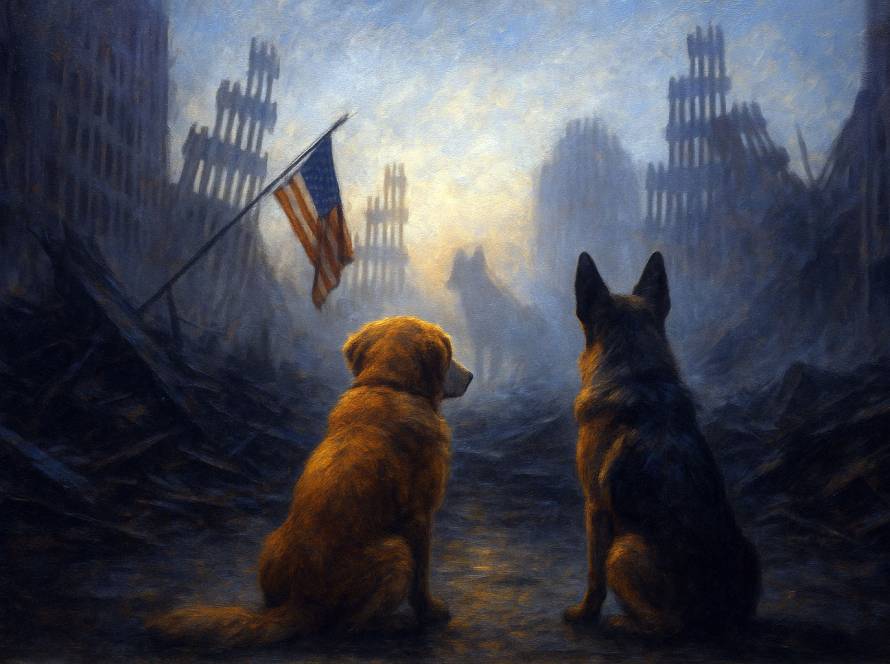In the summer of 1917, amidst the rigorous training exercises on the grounds of Yale University, a stray brindle-coated dog with a short tail wandered into the lives of the soldiers of the 102nd Infantry Regiment, 26th “Yankee” Division. This tenacious pup, later named Stubby, quickly became a beloved companion, especially to Private J. Robert Conroy, who took him under his wing.
Stubby’s charm and intelligence were evident from the start. He learned to mimic the soldiers’ drills and even mastered a canine salute, raising his paw to his brow. When the time came for deployment to France, Conroy couldn’t bear to leave Stubby behind. He smuggled him aboard the SS Minnesota, hiding him in a coal bin. Upon discovery, Stubby saluted the commanding officer, who, amused and impressed, allowed him to stay.

A Canine Comrade in the Trenches
Stubby’s service on the Western Front was nothing short of heroic. He participated in 17 battles over 18 months, beginning with the grueling conditions at Chemin des Dames in February 1918. His acute senses proved invaluable; after surviving a mustard gas attack, Stubby developed a sensitivity to the gas’s presence. On one occasion, he detected a gas attack in the early morning hours and ran through the trenches, barking and biting soldiers to wake them, effectively saving countless lives.
Stubby also excelled in locating wounded soldiers in no man’s land. He would venture out amidst the chaos, find the injured, and bark until medics arrived or lead them back to safety.
Capturing a Spy and Earning His Stripes
Stubby’s most legendary act occurred during the Meuse-Argonne Offensive. He discovered a German spy mapping Allied trenches. Stubby attacked, biting the intruder and holding him until American soldiers apprehended him. For this act of valor, Stubby was promoted to the rank of sergeant, becoming the first dog in U.S. Army history to receive such a distinction.
Wounds and Recovery
In April 1918, during the Battle of Seicheprey, Stubby sustained injuries from grenade shrapnel to his chest and leg. He was taken to a field hospital, where he not only recovered but also served as a therapy dog, boosting the morale of wounded soldiers.
A Hero’s Welcome Home
After the war, Stubby returned to the United States as a national hero. He led numerous parades, met Presidents Woodrow Wilson, Calvin Coolidge, and Warren G. Harding, and was awarded a gold medal by the Humane Education Society, presented by General John J. Pershing.
Stubby accompanied Conroy to Georgetown University Law Center, becoming the unofficial mascot of the Georgetown Hoyas. He would entertain crowds by pushing a football around the field during halftime.
Legacy and Remembrance
Sergeant Stubby passed away in his sleep on March 16, 1926. His remains were preserved and are displayed at the Smithsonian Institution’s National Museum of American History. His story has been immortalized in books and the 2018 animated film Sgt. Stubby: An American Hero.
Stubby’s legacy endures as a testament to the profound bond between humans and animals, and his bravery continues to inspire generations.







